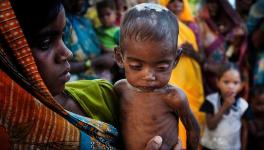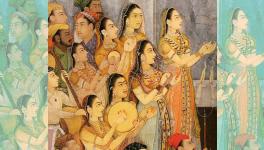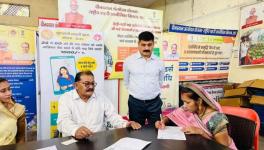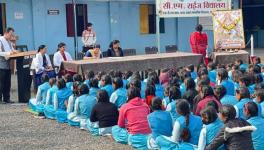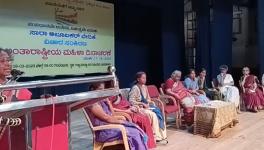About 50% Women in India Aged 15-24 Years Still use Cloth for Menstruation: NFHS-5
New Delhi: About 50% women aged 15-24 years still use cloth for menstrual protection, according to the latest National Family Health Survey (NFHS) report, with experts attributing it to lack of awareness and taboo existing around menstruation.
The experts also said that if an unclean cloth is reused, it increases exposure to multiple local infections.
In the recently released NFHS-5, women aged 15-24 years were asked what method or methods they use for menstrual protection, if anything.
In India, 64% use sanitary napkins, 50% use cloth, and 15% use locally prepared napkins, the report stated. Overall, 78% of women in this age group use a hygienic method of menstrual protection.
Locally prepared napkins, sanitary napkins, tampons and menstrual cups are considered to be hygienic methods of protection.
On exposure to infections due to unhygienic menstrual practices, Dr Astha Dayal of the obstetrics and gynaecology department at the CK Birla Hospital in Gurugram said: "Many studies have shown reproductive tract infections like bacterial vaginosis or urinary tract infections (UTI) could occur which eventually become pelvic infections."
"As these infections can travel up to the pelvis, they can cause difficulties in getting pregnant or pregnancy complications like preterm labour (resulting in premature birth)," she said.
Besides, poor hygiene can increase cervical cancer risks in the long-run, as one of the risk factors for this cancer is poor local hygiene, Dayal said.
The NFHS report also stated that women with 12 or more years of schooling are more than twice as likely to be using a hygienic method as women with no schooling (90% versus 44%).
"Women in the highest wealth quintile are almost twice as likely to use a hygienic method as women in the lowest wealth quintile (95% versus 54%). Seventy-three per cent of rural women use a hygienic method of menstrual protection, compared with 90 per cent of urban women," it said.
The lowest percentages of women use a hygienic method of menstrual protection in Bihar (59%), Madhya Pradesh (61%) and Meghalaya (65%).
Poonam Muttreja, executive director at the Population Foundation of India, said the NFHS-5 shows a direct link between education, wealth and hygienic methods of menstrual protection.
While 80% of women with no schooling reported using sanitary pads, only 35.2% of women with 12 or more years of schooling use sanitary pads, she said, adding that use of cloth for menstrual protection is higher among women from rural areas (57.2%) compared with those from urban areas (31.5%).
Women from the lowest wealth quintile are about 3.3 times more likely to use cloth than women from the highest wealth quintile. Thus, social background often determines access to proper menstrual hygiene, Muttreja said.
The taboo around speaking about periods discourages women from accessing them. Improving menstrual hygiene thus requires investment in girls' education, alongside extensive social and behaviour change communication campaigns to change social norms and behaviours, she said.
Ranjana Kumari, a social activist and director of the Centre for Social Research, said it is important to understand two aspects of menstruation -- one being the shame associated with menstruation and that girls do not share it with anyone.
Referring to the Pradhan Mantri Bhartiya Janaushdhi Pariyojna (PMBJP) under which sanitary napkins are made available in Kendras across the country at a minimum price of Re 1 per pad, she said, "But the most important thing is the government's availability for napkins is for Re 1 so even if you need 12 napkins then you need to ask for Rs 12 from parents and they are shy to inform them."
"Also, parents would think it is a useless expense, so there needs to be counselling of the parents also that there is a health requirement for girls. The government is providing Re 1 napkins that have to be hand-in-hand with sensitisation of community and people,” Kumari said.
The NFHS-5 conducted between 2019-21 has been conducted in around 6.37 lakh sample households from 707 districts of the country from 28 states and eight UTs, covering 7,24,115 women and 1,01,839 men to provide dis-aggregated estimates up to district level.
The national report also provides data by socio-economic and other background characteristics; useful for policy formulation and effective programme implementation.
Get the latest reports & analysis with people's perspective on Protests, movements & deep analytical videos, discussions of the current affairs in your Telegram app. Subscribe to NewsClick's Telegram channel & get Real-Time updates on stories, as they get published on our website.









